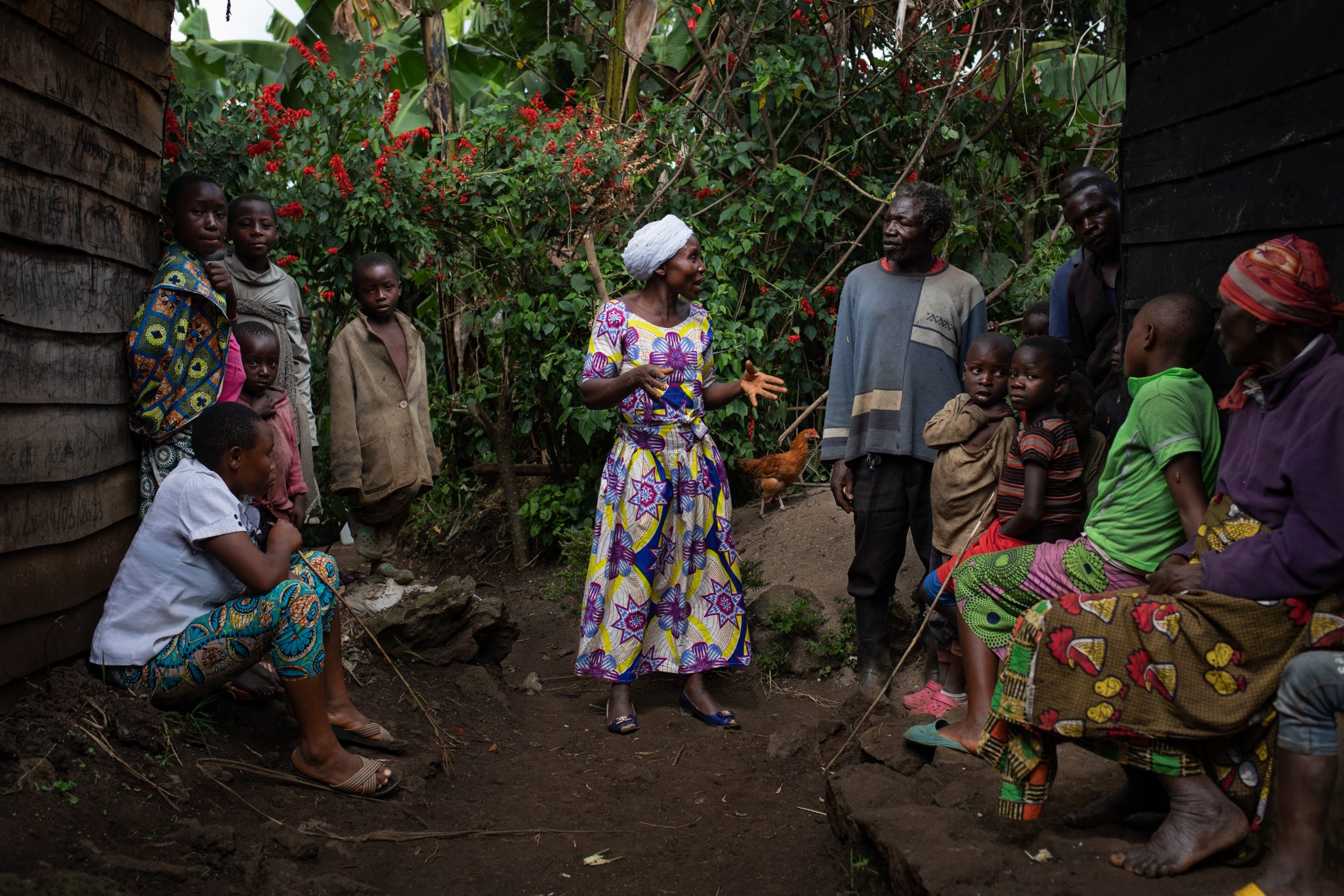While the World Health Organisation has just declared a global health emergency, the mpox virus is already present in many countries on the African continent, and was recently detected in Sweden. In the Democratic Republic of Congo, this zoonosis (a disease transmissible from animals to humans) has been wreaking havoc for almost two years, particularly in forest areas. Because of its close links with the Democratic Republic of Congo, Belgium too has to prepare for the possibility of the virus spreading to its territory.
In South Kivu, one of the two worst affected areas in the Democratic Republic of Congo, Vétérinaires Sans Frontières Belgium is on the front line in detecting the disease. On the outskirts of the Kahuzi-Biega National Park, we have been implementing a One Health project with Médecins du Monde and Action pour le Développement des Milieux Ruraux since 2022. The project was set up following the Ebola epidemic, which revealed the lack of disease prevention and detection systems in the region, which has also been identified as a potential area for the emergence of future pandemics.

© Thomas Cytrynowicz
This is why we have set up a community-based epidemiological surveillance system in the Kabare and Kalehe territories. This system plays a crucial role in detecting zoonotic diseases with epidemic potential, in particular mpox, but also other diseases under surveillance such as salmonellosis, rabies, cysticercosis and tuberculosis. 13 local committees are currently in place, made up of local residents living near the park, indigenous populations (pygmies) and community workers from the 3 health sectors: human, animal and environmental. The latter have been trained to monitor, detect and report suspected cases. It is a system that has proved its worth, since it was through these committees that the first warnings were given at the start of the mpox epidemic in the region. To date, 336 cases have been diagnosed, mainly in the Miti-Murhesa and Kalehe health zones.
An exponential growth
In South Kivu, the epicentre of the new wave of mpox seems to be in the Miti-Murhesa health zone, one of the three health zones where we are active. In the first two weeks of September, the number of cases almost doubled. Most of the patients identified and hospitalised are under 5 years old, and most of the deaths have been among infants.
However, a number of factors suggest that a large proportion of the adult population may also be affected, but are not making themselves known:
- The very precarious nature of the population: even if they have symptoms, many people cannot afford to stop working to take care of themselves, or risk starving their whole family.
- Lack of knowledge about how dangerous the virus is: people still have vivid memories of the ebola virus, which had a fatality rate of over 50%. By comparison, mpox seems almost harmless.
- Fear of social stigmatisation: as the virus originally appeared among sex workers in the mining town of Kamituga, those affected tend to hide it for fear of being stigmatised.

© Thomas Cytrynowicz
The rapid spread of the epidemic can be explained by other factors, such as the difficulty of isolating patients and the low local capacity for sampling and analysis. The number of cases far exceeds the capacity of health centres, which do not have the means to feed patients. Even infected patients therefore leave hospital every day to buy food in their community. This is also the case for mothers who accompany their young sick children and share their bed, often with other uninfected children. As for suspected but asymptomatic patients who go to health centres for tests, they are sent home long before the results are available. By the time they test positive, it is far too late and almost impossible to trace them.
Why is the community approach essential in the fight against mpox in South Kivu?
The first vaccines have arrived in Kinshasa and are waiting to be distributed to the various affected areas across the DRC. But it’s already clear that there won’t be enough for everyone. That’s why prevention and awareness-raising remain crucial to containing the epidemic. And to achieve this, the community approach offers the most sustainable results.
The One Health committees set up as part of our project bring together more than 200 people from the communities of Kalehe, Kabare and Miti-Murhesa. They have all been made aware of high-risk behaviour and barrier gestures, and are responsible for spreading the message within their villages. They have also been trained to recognise the symptoms of the disease. This is an essential link in reaching the most remote regions and, we hope, stopping the spread of the virus.
This article was updated on 13 September 2024 to reflect developments in the epidemic.

